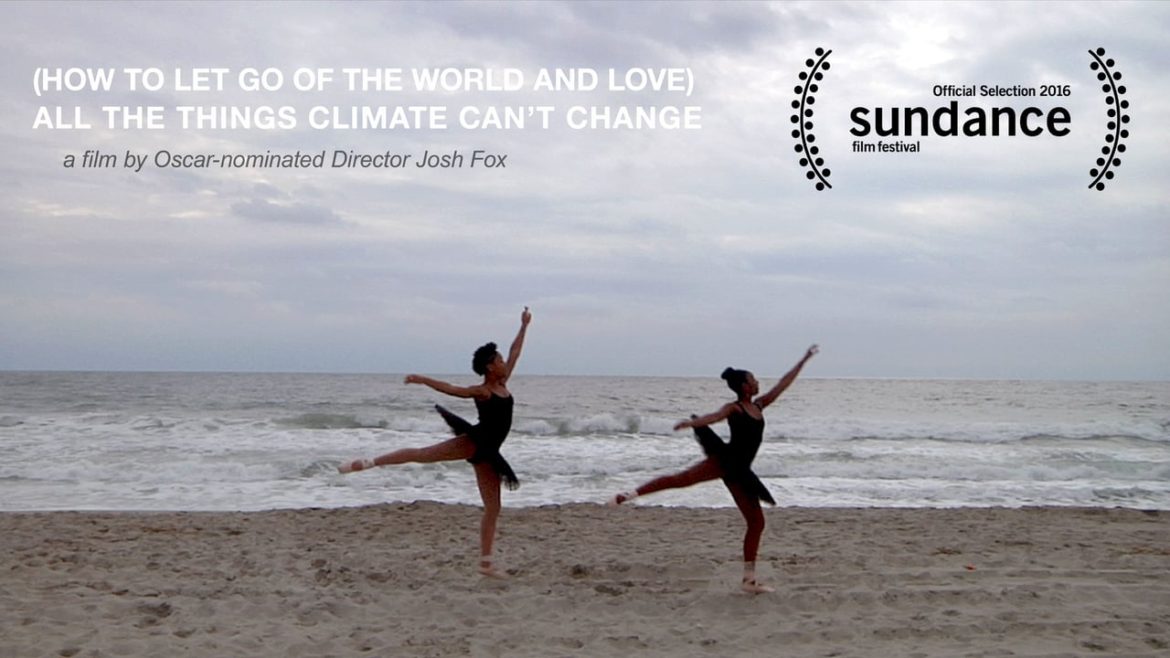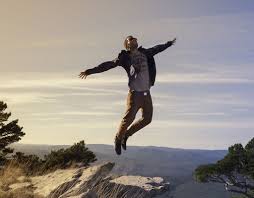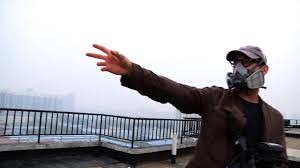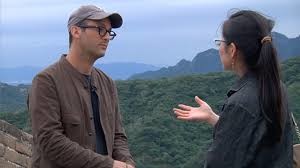If you count yourself in this group, Gasland director Josh Fox’s new documentary – the half-charmingly, half-clunkily titled How To Let Go of the World: And Love All the Things Climate Can’t Change – is aimed straight at you.
It’s not a pretty picture. The essentially unanimous warnings from scientists, the overwhelming evidence of coming calamities, and the shameful responses from governments of the world who do nothing (or, worse, soldier on to the brink) – this is the stuff ecological depression is made from. And, as usual, the brunt of the climate disaster will fall, inexorably and seemingly inevitably, on the most vulnerable communities of the world, human and non-human alike. To its credit, Fox’s film wonders out loud what many of us only mutter privately: What’s even the point anymore?
Eventually, we are provided some speculative answers, but first, the film digs deep into the issues, criss-crossing the globe and putting human faces to the grim numbers that advocacy docs usually trot out humorlessly. From An Inconvenient Truth on, there’s been an unfortunate PowerPoint flavor to such efforts, burying the lives of real people under the weight of finger-wagging statistics to the point that the effect is closer to boredom than outrage. This, thankfully, is not something anyone will accuse How To Let Go of perpetrating.
We open on some ingratiating footage of Fox dancing joyfully to “Obla Di Obla Da” in his apartment – this is several years ago, hot on the heels of a local victory to protect the Delaware River Basin. It’s a silly, celebratory moment (it turns out Fox has a background in dance), but the weight and scope of the struggle emerges almost immediately.
A battle has been won, but the war for a livable planet isn’t going well. Starting from the personal – the tree he planted as a child is dying from an onslaught of insects whose presence is directly related to climate change – Fox rattles off the requisite numbers regarding expected sea level rise, acidification of the oceans, the intractable influence of the fossil fuel industry, the effects of animal agriculture, and on and on. In something approaching a crisis of faith, he wonders if he’s dancing too soon. Hoping for something to hold onto, Fox travels the world to view firsthand the impact climate change is having on communities right now, and to bear witness to what those communities are doing about it.
We talk to some experts who lay out the increasingly desperate facts. We visit the islands of the South Pacific, where ancestral lands stand to vanish. We talk to accidental activist Tim DeChristopher, who served two years in prison for gumming up the works of a Utah land auction. We encounter the ravages of Hurricane Sandy, standing in for the extreme weather events we can expect only to increase. In the film’s best section of this sort, we travel to coal-smog-filled Beijing, a “city of 20 million people who never open their windows,” and meet a young girl whose health problems have resulted in a startling familiarity with scientific measurements and jargon.
Her youthful expertise is both impressive and enraging – no child should be forced to be an expert on air pollution. She has no choice but to be one. (Fox and his crew seem barely to make it out of China with their footage, providing one of several unexpectedly gripping sequences, somewhere between verite and an action movie.)
This is only the tip of the iceberg (to use an unfortunate metaphor), and Fox admits to hopelessness. Instead of wallowing in it, he decides instead to find someone, anyone organizing and fighting back. The narrative is then split into concepts like resilience and bravery. In Zambia, a local man seeks to integrate solar in remote regions. In the South Pacific, a canoe-flotilla of indigenous activists block an oil tanker. Local struggles across the globe are emphasized, leaving the impression of a ramshackle quilt of resistance.
The common thread between them is a joy, a shared struggle, in the face of impossible odds. Dancing returns several times – a war dance, a ballet on a beach. It’s a motif that might be cloying under some circumstances, but it works here. (It helps that the scenes are shot in consistently interesting ways visually.)
Clocking in at over two hours, some viewers might deem How To Let Go overlong or a bit scattered, but the slow build of the first third and its unwinding in the final segments are appropriate to the subject and the mood. I’m not sure Fox needed to be on screen quite so much, even in what amounts to a personal filmic essay on some level; this is particularly the case in the canoes vs. oil tanker segment, which inscrutably seems to be as much about the danger his camera faced as the threat to the activists. And his ubiquitous Yankees cap and low-key, travelogue interviews will also conjure up inevitable comparisons to Michael Moore – a disservice to Fox, who is an infinitely more honest filmmaker than Moore has ever been, at least since Roger & Me.
But the overall sense you get from How To Let Go is a deep and serious consideration of the challenges ahead, an honest reckoning with the feeling of being overwhelmed, and a resolute insistence on the moments of connection and joy that make the fight worth fighting. There’s also something fundamentally admirable, in the current climate of choir-preaching, about an advocacy doc that doesn’t pretend to know all the answers. There’s a sense of questing and honest interrogation that lends How To Let Go an unusual dignity, even when Fox is dancing around like a big dork. That alone is worth the price of admission.
How To Let Go opened the San Francisco Green Film Festival last week, and has been making the festival rounds. It opens theatrically this week, and look for it on streaming services in the days to come.
The producers are also putting together an ambitious plan to screen it in 100 locations for free, frequently tied to relevant local struggles – a nice touch that emphasizes the film’s commitment to that patchwork of communities refusing to knuckle under to the inevitable and to the powerful. It’s a rare impulse for this kind of thing, and Fox and friends should be commended for putting their time and money where their mouths are.




